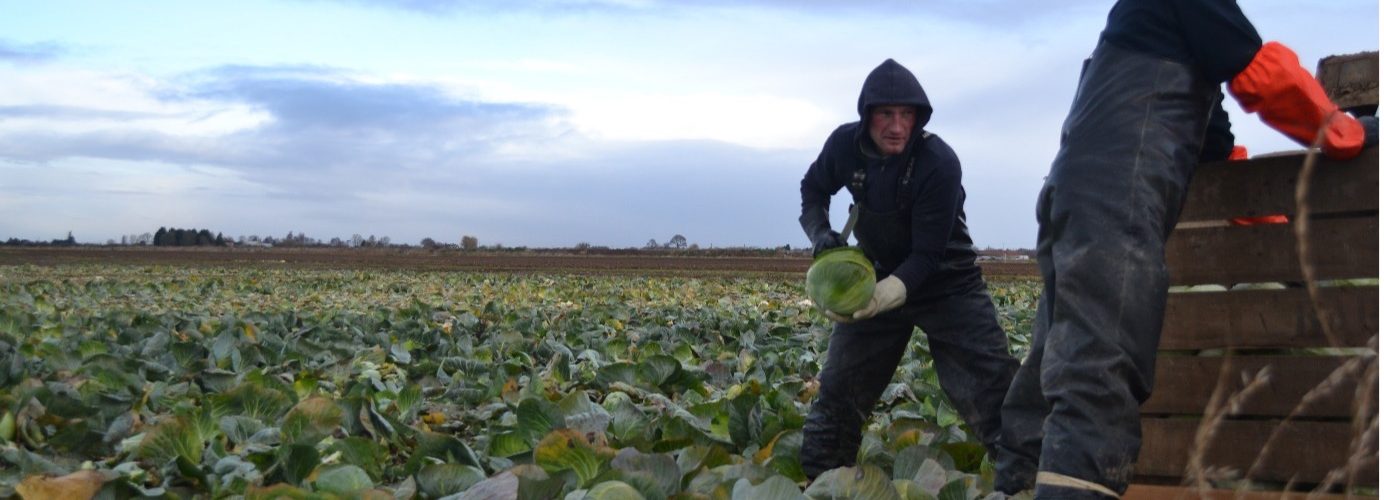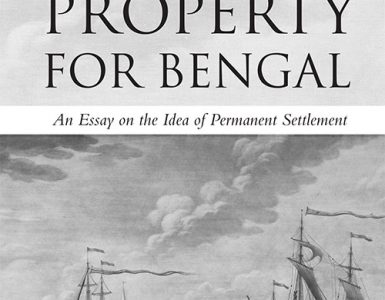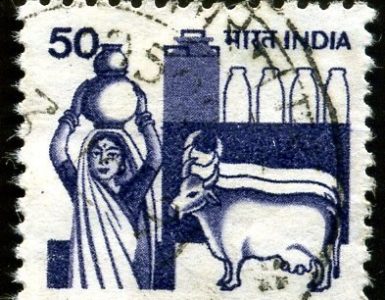Rowan Jaines
In the mid-sixteenth century, William Herbert the Earl of Pembroke expelled villagers from long standing settlements on the boundary of his estate. Herbert had a vision of an arcadian country park, landscaped in the vision of a bucolic and well-ordered England, ruled over by a noble upper class. To achieve this vision, the labourers in the village just outside the estate were ordered to leave.
In anger at their expulsion from their homes, the villagers invaded the park. In retaliation Herbert travelled to his Welsh estates and ordered an army of tenants whom he marched to Pembroke. This army, at Herbert’s order, hunted and slaughtered the invading villagers leaving the grounds clear for the development of a harmonious and beautiful country park (Wood, 2007).
A generation later Herbert’s son Henry married Mary Sidney, whose brother Philip Sidney wrote ‘The Countess of Pembroke’s Arcadia’. The pastoral images in this book, inspired not only by Herbert’s estate but also by his political philosophy, defined literary depictions of the English countryside for the next two centuries, influencing writers from Shakespeare to John Milton.
Monocultural arrangements
This category of territory; the rural, the pastoral, the agricultural, the arable, or the countryside – is slippery, never fully or accurately described by any of its possible names. Neither reducible to, nor attainable by discourse, the very act of agricultural production is always simultaneously, over and underdetermined. The monocultural arrangement, by which I mean, the tending of a crop within a delimited space, whilst creating a hostile environment for all other life, can be understood as a counter transcendental category. It literally embodies the immanence of existence in its emphatically mundane, earthbound, and corporeal form. It is the site that shows the field of force between nature – at once a tyrant and a martyr – and sovereign power, the rule of bounded territory.
Sociology was created and named as a discrete discipline in 1838 by the French philosopher of science, Albert Comte. This initial vision was of a positivistic science of social life, using, mainly urban focused experiments and observations to understand the behaviour of ‘society’. The idea of ‘society’ as a delimited, bounded entity is analogous to, and in part generated by, the conception of the city-state. This urban environment was named the polis by ancient Greek thinkers of the 4th century BCE, most notably Plato and Aristotle.
In short, since the birth of the ‘political philosophy’ the urban has been imagined as the situated body of society. This is a model of thinking that obscures the relational significance of rural life. The ancient Greek polis was distinguished from other types of community through the presence of distinct activities, such as: commercial exchange, judicial proceedings, and public deliberation. These systems imagined arable land as part of the polis, rather than its life sustaining force.
Standard accounts of the history of sociology see the roots of the discipline as originating in classical Greek thought, and this theoretical orientation has provided many of the bases of the social analyses of ‘classical’ sociologists such as Emile Durkheim. Contemporary sociologist Mark Shucksmith (2010) has raised the issue that the agency of people in rural areas frequently goes not only unnoticed but is actively neglected in sociological research. Rural areas are understood, even in contemporary research, as lacking in ‘social life’. In other words, by imagining the urban as the location of ‘society,’ the sociological discipline has neglected some fundamental conceptual problems. Pivotally, the place of the rural in the social whole.
It seems we have forgotten the fundamental importance of agricultural operations to social life, even as forces of production diversify. Mid twentieth century mechanisms for understanding rural life were derivative rather than critical or radical. Indeed, the first annals of the Rural American Sociological Society published in 1936, made the case for a rural sociology which viewed agriculture as a ‘primitive’ mode of production.
This first issue is revealing, its analysis of agricultural communities labelled them foetal cities and the postcolonial indigenous rural community “parasitic” (Zimmerman et al 1936). In this paper, the scholars identify a rural site which had been colonised by European settlers who had moved on after having altered the ecosystem entirely through monocultural farming practises, and the commodification of the land. In doing so, the earlier settlers had alienated the Indigenous population. Despite this, the authors of this paper, characterised the Indigenous population as parasitic, because they received government assistance.
In sum, the early attempts of rural sociology to understand the countryside, are bound up with the same Kantian flaws that have provoked criticism within the medical sciences and the associated disciplines of anthropology and geography. Kant follows the Aristotelian project in imagining a hierarchy of beings in which the white male body, and the urban site appear as ‘most developed’. The early development of rural sociology suggests that the corporeal body is separate to psychic life. The body here is understood as a phenomena synonymous with the rural, the physical manifestation of common ancestry and inheritable traits that are perpetuated through generations; the life of the mind on the other hand, is imagined as an urban phenomena, a cultural category of being that is capable of transcending and overcoming corporeal constraints.
The rural as an analytical category
There is an alternative way of interrogating the rural as a site of social life. Instead of imagining the rural and the urban as two poles on an evolutionary spectrum – we might instead imagine the city as always shot through with the agricultural. When conceived of in this manner, agriculture is neither a starting point, nor an end destination – it is rather an interminable force, a relationship with nature that is reproduced within social and political life. When we think of commodities, this task is fairly simple: of course plants make up 80 per cent of the food that humans on the planet eat and of course they are grown in farmers fields, and of course they are sold to people in the city. The task gets more difficult as we begin to think about philosophical, economic and political products and issues. It is nevertheless an important task, enabling us to see assumptions about the rural afresh.
Long before Aristotle and Plato, in the 8th century BCE, the philosopher farmer Hesiod in Works and Days warned that the life of the polis sails upon the sea of a dangerous and unstable nature. A farm, Hesiod explained, is a part of nature that human beings take as their own and try to direct towards expedient ends. Humans cannot however, control the movements of nature within their bounded plot. The agricultural field is not understood as a tamed patch of earth by Hesiod. It is rather the site where we can see in action the relationship between human social organisation and the dis-ordered, chaotic force of nature (Nelson and Greene, 2002).
For Hesiod this is a bond that is at once co-operative and hostile. Nature is the force that both causes the crop to grow and destroys the self-same crop, through the actions of insects, diseases and storms. The farmer can perceive nature’s actions but cannot control its force entirely – even with the best planning. It is here, I propose, in the relationship between society’s need for food and the untamable earth that a radical rural sociology may emerge. This requires an understanding of the world that does not see human life and subjectivity as having primacy even within human society- indeed within sociology.
The pre-Aristotelian theory of arable land found in Hesiod’s Works and Days suggest that rather than being distinct from social life, the organisation of ‘nature’ that is used in arable arrangements is always indelibly entwined with the management of human life. The arable field is the ground on which we find the dialectic between history and necessity, autonomy and nature. In the following section I consider the dual issues of land ownership and food production and explore the conspicuous absence of the rural from English public knowledge and the UK’s democratic tradition.
The rural is haunted
In the opening scene of Caryl Churchill’s (1983) play Fen, a Japanese businessman “Mr Takai” introduces the audience to this specific landscape in which, he explains, he hopes to invest his money and in which the audience will invest their time for the duration of the drama. Mr Takai explains that this land was once underwater. The Fens squirmed with fish and eels in reed-ridden currents until; “In 1630 rich lords planned to drain the Fen, change swamps into grazing land, far thinking men, brave investors.”
The Fen people, he continues, had “no vision”. They claimed to be content with their writhing mire and actively opposed the drainage. Despite this, for Mr Takai, the story ends happily ever after; “In the end” he tells the audience “we have this beautiful earth. Very efficient, flat land, ploughs right up to the edge, no waste”.
Mr Takai’s monologue describes a Fen community which is intractable and aggressively resistant to progress. In his account the Fen-dwellers are less than human, ignorant and indolent in the face of technological progress; – “they refused to work on the drainage, smashed dykes, broke sluices” he tells the audience.
From Mr Takai’s prospector’s viewpoint both landscape and history are broken into parcels of investment, arranged in a logical movement forward, but the bounded space of the stage allows Churchill to counter this narrative. Using temporal slips and spectral traces the audience is made aware that this progress narrative is dependent on myriad omissions, or perhaps more precisely, repressions. Ghosts walk upon the stage.
The labour of working-class bodies and the land itself only feature in Mr Takai’s narrative at the point in which they threaten to interrupt material accumulation. The compliance of labouring bodies is framed as natural within this temporal schema. The ghosts who appear on stage during Fen expose the violence of this myth, for example the spectre of an unknown woman appears and tells Tewson the farmer, that she is starving and that ‘you bloody farmers could not live if it was not for the poor, tis them that keep you bloody rascals alive.’ At the end of the play, the character Val who has died in the final scenes returns as a ghost and recounts tales of violence that namelessly bleed across temporal boundaries. ‘I can’t keep them out’ Val cries as unseen spectres proliferate around her: ‘Her baby died starving, she died starving, who?’. These ghosts act as both the sign and effect of voices displaced from history because the recognition of these experiences would disrupt the claim of history as progress.
The agricultural labourer, like the midwife, is a constant social form that appears across history and geography. (I make a distinction here between the labourer and the farmer, though some farmers are also labourers on their own land, not all make this connection with the soil and vegetative matter.) In the richest as well as the poorest of countries, seed needs to be sown, stones need to be picked, and produce harvested. Despite myriad technological advances this is one job, that like the midwife has remained a constant reminder of mortality and human dependence upon the physical realm. Long before companies like Uber and Just Eat combined the gig economy model with mobile technology, the shifting seasonal demands of agriculture meant that short-term and ‘payment by task’ labour relations were standard practice.
In the East of England during the agrarian revolution, service providers called ‘Gangmasters’ provided landowners and farmers with workers at peak times. These labourers, have through history been ‘non-citizen’ individuals, people without suffrage or rights, many who are ‘just’ legal enough to pass inspection, many who are not. In the late 19th century this population was made up of children and traveller and gypsy communities as well as the rural poor. In the mid 20th century gangmasters used the labour of rural working-class women.
After the expansion of the European Union in 2004, a web of employment agencies began to operate between some of the poorest areas of a newly expanded Europe and the furthest back waters of the rural UK. Modern slavery emerged in the small market towns that punctuate wide rural expanses in places like Cambridgeshire and Lincolnshire. The figure of the agricultural labourer is the image par excellence of the labour that underpins the formal choreography of alienation – it is in rural social organisation that political forces and agri-technology constellate, always in motion and in relationship. The study of the arable is not a side pursuit, rather it anticipates and helps us grasp the dark present.
Agricultural oligopsony
In our present moment the horrors of the impending climate crisis appear in the interminable cycle of twenty-four-hour news across multiple devices. We find ourselves standing in the nexus of myriad ‘monocultural arrangements’ – precisely management systems that use technology to resist diversity and contingency. In these systems more and more of the same is produced. Human use of natural resources to produce goods currently affects more than 70% of the global, ice-free land surface. Between one quarter to one third of this available land is used by society for the primary production of food, feed, fibre, timber and energy.
This is a situation that came to fruition during the twentieth century, though it has a longer pre-history. Data shows that since 1961 global population growth and changes in consumption patterns have together caused unprecedented rates of land and freshwater use. Agriculture currently accounts for two thirds to three quarters of global fresh-water use. Areas under agriculture and forestry have expanded dramatically during this period and have contributed to increasing greenhouse gas emissions, and widespread loss of natural ecosystems and biodiversity.
About a quarter of the Earth’s ice-free land area is currently subject to human-induced degradation. Soil takes a long time to form and conventional farming practises are eroding the soil at a rate more than 100 times faster than the soil formation rate. Drought and desertification are becoming steadily more commonplace. In 2015, the UN estimated that around 500 million people lived within areas which experienced desertification between the 1980s and 2000s. The effects of climate change and land degradation disproportionately affects areas in the Global South, and this process is resulting in exponential loss of diversity, and impending food crises in areas such as South and East Asia, North Africa and the Middle East.
Since the mid twentieth century the incessant production of more of the same has been facilitated by the limited attention given to the social and economic arrangements of rural communities and land use. This is a form of alienation that leads to the acceptance of apocalyptic events as everyday inconveniences, whilst simultaneously we accept day to day conveniences in return for climacteric conditions – the interminable by-product of splitting of the sensuous form from value.
Land ownership remains a key underpinning component of rural land use. Property rights are used to control the way that land is used or not used in rural areas and this has implications for sustainable development, resilience and ecosystem services. In the United Kingdom the right to private property is central to the idea of citizenship and trumps the right to public knowledge regarding the use of land. This becomes particularly pertinent when considered through the lens of agricultural land, because data protection laws mean that it is often impossible to find out which areas of land are home to specific crops and farming practices. Due to privacy laws concerning land, particularly inherited land, knowledge about the production and economics of agriculture in the UK has long been obscured. Much of the history of rural policy and practice can be understood as a struggle between the rights and privileges of private landowners and state intervention in the public interest. These tussles have however, produced far less change than at one time seemed inevitable.
When it comes to land ownership, the UK is currently a more unequal country than Brazil – where there are regular land riots. In Europe only Spain is more unequal in terms of land ownership than the UK, through the maintenance of land patterns imposed by General Franco’s fascist regime. English land ownership laws themselves date back to 1066 when William the Conqueror claimed all of England for the Crown, then leased estates to lords and nobles, who in turn leased the land to tenants and farmers. Today, England and Wales remain among the last countries on earth which continue these ancient patterns of landownership. Because these hereditary estates make up a large portion of the UK’s agricultural land, this means that the machinations of political and economic systems are obscured within UK food production and farming.
It is almost impossible to work out the extent of the assets and political influence enjoyed by the UK’s largest land owning families. Whilst all land in England and Wales is required to be registered at Her Majesty’s Land Registry following any significant change in title, this does not apply to land that has not changed hands since registration was made compulsory. The Land Registry currently estimates that 20% of the land mass in England and Wales remains unregistered: most of this unregistered property is rural land. Accurate statistics on the identity of landowners and the nature of land holding in the UK are therefore very difficult to produce. The aristocratic landowners exercise a huge amount of control over rural England. British land ownership and agricultural subsidies have been painstakingly kept out of the public eye by successive governments under the duress of the House of Lords. This is the non-elected arm of the British parliamentary system which is still dominated by hereditary peers whose families form the English land-owning class – referred to variously as the aristocracy or the nobility.
In 2016 Unearthed – an investigative journalism project run by the environmental organisation Greenpeace – ran an investigation into the top 100 recipients of direct EU farming subsidies. They found that UK hereditary land- owners as a group, received a total of £87.9m in agricultural subsidies in 2015, of which £61.2m came from the single payment scheme – this is more than was paid to the bottom 55,119 recipients in the single payment scheme combined.
The payments take up the vast majority of the farming subsidy pot. At least one in five of these single payments went to businesses owned or controlled by members of aristocratic families, including; the present Lord Rothschild (also known as a previous BSkyB director and the long-term friend of the monocultural media mogul Rupert Murdoch), and the Conservative MP Richard Drax. Rumoured to be the UK’s richest parliamentarian, Mr Drax has a fortune that exceeds £150 million. Much of this wealth was accumulated through his family’s sugar plantation in Barbados established in the seventeenth century and run using slave labour for over two hundred years.
Richard Drax has consistently used his family’s wealth and his resultant position in the House of Lords to restrict support, education and individual freedoms to working people, as well as voting against environmental and democratic measures. This organisation of the landowning aristocracy and privilege of private property, is a germinate gem that has refracted, bent the force of the farmers field into another oblique source of force. The global agri-food system can trace its origins back to the last quarter of the 19th century in Britain, which was then the world’s dominant commercial power. In our current moment, although our supermarket shelves burst with culinary variety, the production, supply, and distribution of food is increasingly pooling in a handful of corporations, most notably in the hands of Associated British Foods, Cargill, Unilever and Nestle.
This pooling of force creates a dual process. On one hand these corporations operate an oligopoly—precisely a market with a small number of sellers; on the other, they also control an oligopsony – a market with few buyers. It is not only hard to grow grain, it is now difficult to sell it as well. Tenant farmers and other non- landowning agricultural workers grow poorer and less powerful each year. Max Weber’s (1918) classic definition of the state describes ‘a human community that successfully claims the monopoly of the legitimate use of physical force within a given territory,’ we have forgotten that issues regarding the production and distribution of food are a primary source of force and its uses. Colonialism is usually understood in terms of the establishment of rule over a distant territory and the control of its people. However, the arable shows how colonial organisation grounds, founds, and exceeds itself ‘at home’ in the farmer’s field.
Towards a radical rural?
The rural holds the accrued material of centuries of political and legal domination over subordinate people, the exploitation of human and natural resources and the construction of racial and cultural differences that privilege the nobility over the populations they rule. In other words, by identifying the urban as the primary site of social life we have understood the fruit of our social organism as the ‘evolved’ or ‘cooked’ form rather than as part of a wider organic form.
Put a different way, the rural does not underlie the city in an evolutionary manner. Society cannot evolve beyond the requirement of the organised production of food, and this need cannot be met predictably over a long term due to the inherent inconsistencies of natural forces. In other words, the foundation that the rural provides for the urban is always unstable and inconsistent.
In our current moment, economic and political spheres increasingly congeal in petrified unrest. Yet it is in the arable that the forces of nature that may provide an unsettling drama to halt the production of more of the same. Nature is frequently violent, and always generative.
References
Churchill, C. (1990) Plays 2:”Softcops”; “Top Girls”; “Fen”; “Serious Money”. London: Methuen World Classics.
Nelson, S., & Grene, D. (2008). God and the Land: the Metaphysics of Farming in Hesiod and Vergil. New York: Oxford University Press.
Shucksmith, M. (2010). Disintegrated rural development? Neo‐endogenous rural development, planning and place‐shaping in diffused power contexts. Sociologia ruralis, 50(1), 1-14. https://doi.org/10.1111/j.1467-9523.2009.00497.x
Weber, M. (2004). ‘Politics as a Vocation’ in Owen, D. S., & Strong, T. B. The vocation lectures. Indianapolis: Hackett Publishing.
Wood, A. (2007) The 1549 Rebellions and the Making of Early Modern England. New York: Cambridge University Press.
Zimmerman, C. C., Useem, J. H., & Zeigler, L. H. (1936). Littleville: a Parasitic Community During the Depression. Rural Sociology, 1(1), 54.

Rowan Jaines is an ESRC sponsored doctoral candidate in the Department of Geography at The University of Sheffield. Her thesis Landscapes of Discontent: Petrified Unrest in the Fens of Eastern England interrogates the Fen region as site that reveals the discontinuities and disruptions inherent to the formation of Western political thought. Her work more broadly focuses on nature as a contested concept, as well as the use of creative methods in social research.
Header Image Credit: Author’s own
TO CITE THIS ARTICLE:
Jaines, Rowan 2022. ‘The Social Life of Agriculture: History Passes into Setting’ Discover Society: New Series 2 (1): https://doi.org/10.51428/dsoc.2022.01.0004




